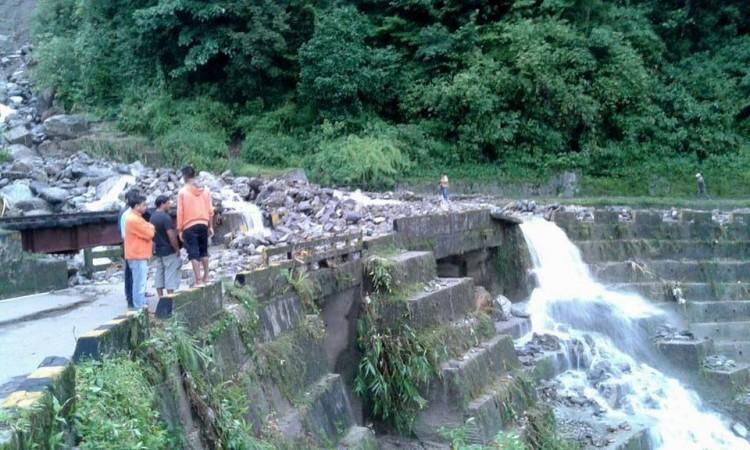
The toll in the landslides-ravaged Darjeeling hills of West Bengal rose to 32, with two more bodies being recovered on Thursday as relief and rescue operations continued in full swing, officials said.
Union Minister of State for Home Affairs Kiren Rijiju and Chief Minister Mamata Banerjee during the day visited the affected areas, and assured all assistance for the rehabilitation of the people.
The bodies, including that of a female, was recovered from Mirik, the worst affected area accounting for at least 24 deaths so far.
"We recovered two more bodies today (Thursday) while at least 10 others are still missing," Sub-Divisional Police Officer Abhijeet Singh Kadian said.
Banerjee on Wednesday had put the toll at 30.
Rescue and relief work including search for the missing people continued on full swing as both Rijiju and Banerjee visited the affected areas.
"Our priority is to ensure effective rescue operation. We will do whatever is necessary. We have to work with the state government," said Rijiju, who reached the region on Wednesday following instructions from Prime Minister Narendra Modi.
"The government is going to provide relief for the damage as well as rehabilitate. We are planning to construct highways here but we need to discuss that in detail before implementing," he added.
Along with the National Disaster Response Force (NDRF), the Sashastra Seema Bal (SSB) and the state government's disaster management, the Indian Army too has deployed two task forces for rescue and relief work.
Army teams carrying relief equipment, including boats and life jackets, have been deployed since Wednesday in Jalpaiguri district, which has been inundated following incessant heavy rainfall and release of water from the Teesta barrage, a defence spokesperson said in Kolkata.
Large parts of Jalpaiguri district are already submerged, affecting over 5,000 people. The administration has issued a red alert with rivers flowing over the danger mark.
The local meteorological department said there will be no respite from the inclement weather, and forecast continued widespread and heavy rainfall for two more days.
Mamata Banerjee, who has been camping in the region since Wednesday night, visited relief camps on Thursday.
While the state government has set up three community kitchens, Banerjee said the central government has been urged to order the Geological Survey of India (GSI) to undertake a special survey of Mirik, the worst affected area.
"Our administration is working relentlessly to extend support and assistance to the people of hills. I am continuously monitoring the relief activities. We are with my brothers and sisters all the time," the chief minister tweeted.
She also handed cheques to the affected families.
The state government has announced a compensation of Rs.4 lakh each to the kin of the dead and Rs.1.25 lakh to the injured.
Bimal Gurung, chairman of autonomous hill council Gorkhaland Territorial Administration (GTA) who accompanied Rijiju, said the regions link with Sikkim was totally severed due to extensive damage to the national highways.
"Remote villages in Kalimpong still have no access for relief materials as road conditions are very bad and many foot bridges connecting these areas have been swept away," said Gurung.
Beside the state government, the central government and the GTA have declared Rs.2 lakh as compensation, respectively.
Biogeography and oceanography expert Sugata Hazra said the landslides were possibly due to formation of micro-fractures from the April Nepal earthquake combined with the heavy rainfall.
GSI expert Saibal Ghosh said the region is mapped as "highly susceptible" to landslides and the current series of landslides could be connected "remotely" to the Nepal quake.

















